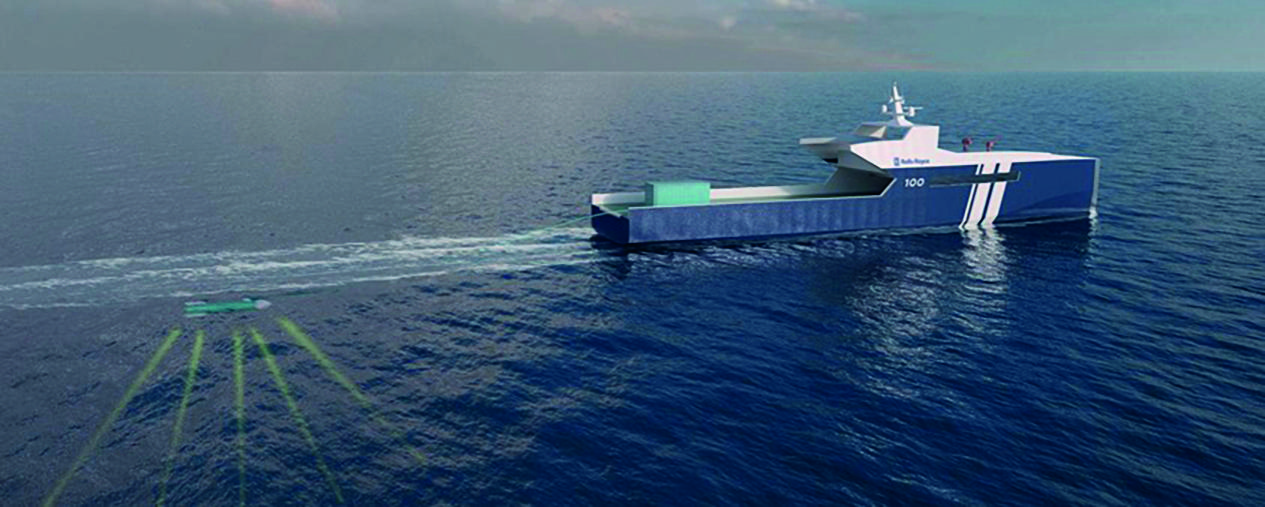The seas are not just the final frontier for exploration; they are a domain ripe for technological advancement. Rolls-Royce is making ripples in this ocean of opportunity with its innovative approach to naval warfare. Picture this: an autonomous naval ship—designed for patrol, surveillance, mine detection, and fleet screening—that’s revolutionizing how we view maritime defense. With the buzz around artificial intelligence and automation reaching a fever pitch, we take a closer look at the features, advantages, and challenges of this remarkable vessel.
Design and Capabilities: A Ship of the Future
At a striking length of 60 meters, the latest design by Rolls-Royce boasts formidable capabilities. The ship’s noteworthy specifications include:
- Longevity: Capable of remaining at sea for up to 100 days.
- Speed: A top speed exceeding 25 knots.
- Range: A cruising range of 3,500 nautical miles.
- Power System: Equipped with a fully electric propulsion system and solar cells for additional energy production.
This fusion of technology and sustainable energy makes the autonomous ship highly efficient and adaptable, primed to support naval tasks across expansive maritime territories.
Automation Meets Safety: A Future Dual Structure
In an era where automation is not merely a convenience but a necessity, Rolls-Royce envisions a stellar synergy between traditional manned vessels and smaller autonomous counterparts. This partnership can potentially streamline operations, reduce operational costs, and significantly enhance safety by minimizing human error. However, one pressing question arises: What happens when there’s no human on board to address a malfunction?
To tackle this concern, Rolls-Royce focused on enhancing the reliability of its power and propulsion systems. Major emphasis is placed on:
- Mechanical Redundancies: To ensure that if one system fails, others can take over effectively.
- Predictive Maintenance: Leveraging machine learning to anticipate and address maintenance issues remotely before they escalate.
This proactive approach to design not only fortifies the ship’s operational framework but also helps to mitigate risks associated with autonomous navigation.
Cybersecurity: A Commanding Priority
As technology advances, so do the tactics of adversaries. Cyber warfare is a looming threat in today’s digital age, and for autonomous naval vessels, safeguarding against such threats is paramount. Rolls-Royce is prioritizing cybersecurity measures to ensure the reliability and security of their ships. Ensuring that machine vision and sensor technologies are robust against cyber vulnerabilities could mean the difference between success and failure in a fleet’s operational capacity.
Learning from Predecessors: Insights from DARPA
The concept of autonomous vessels isn’t entirely groundbreaking. Notably, DARPA collaborated with Leidos to design a vessel for covert submarine tracking, demonstrating that the cost of operating an autonomous ship can be significantly lower than that of its manned equals. As advancements in AI and machine learning continue to evolve, the groundwork laid by previous projects serves as both a resource and a cautionary tale.
Conclusion: A Call to the Future
As Rolls-Royce embarks on this ambitious journey to innovate naval defense, the implications of their autonomous ships extend far beyond the maritime domain. We’re witnessing a paradigm shift that could redefine how navies operate across the globe. With challenges such as maintenance, cybersecurity, and integration with existing fleets being addressed, the horizon appears promising.
At fxis.ai, we believe that such advancements are crucial for the future of AI, as they enable more comprehensive and effective solutions. Our team is continually exploring new methodologies to push the envelope in artificial intelligence, ensuring that our clients benefit from the latest technological innovations.
For more insights, updates, or to collaborate on AI development projects, stay connected with fxis.ai.

